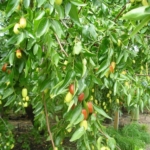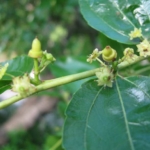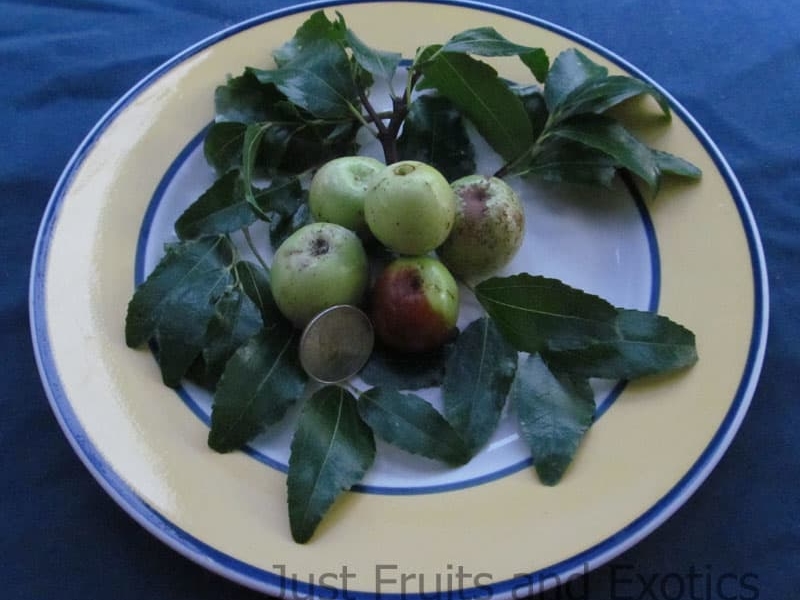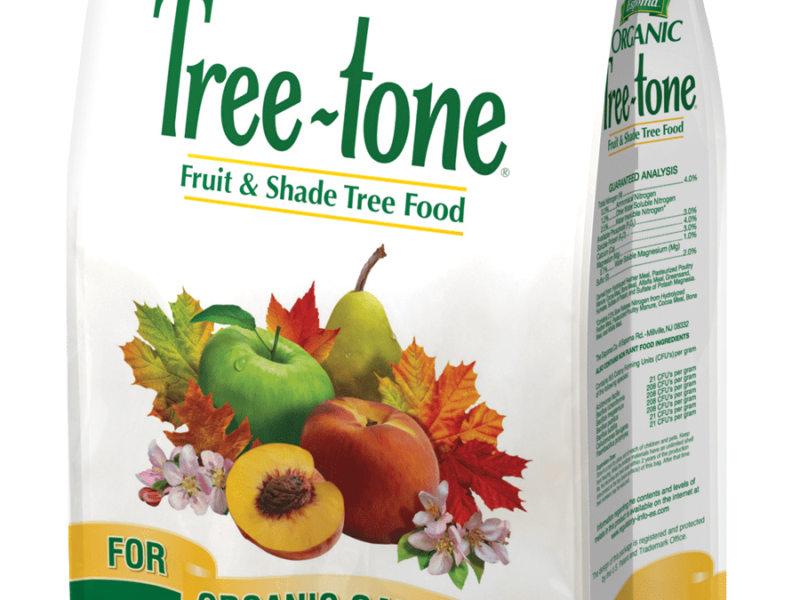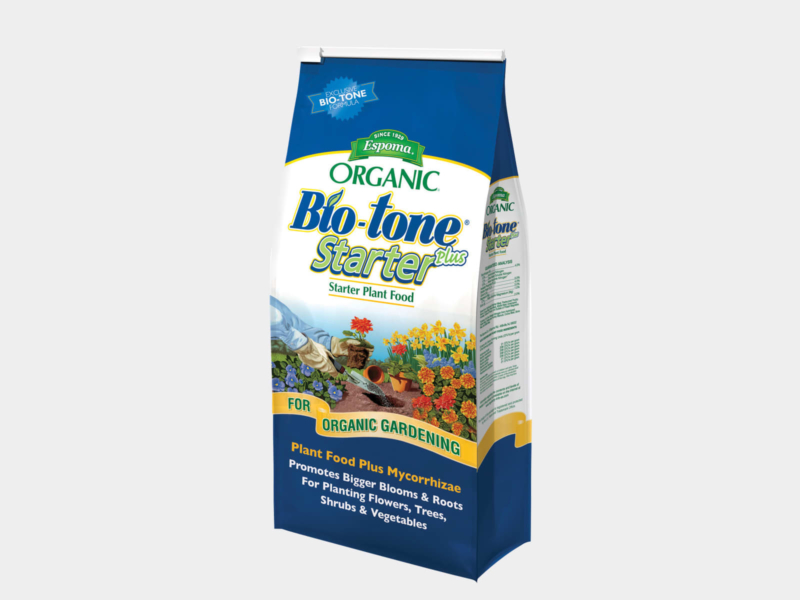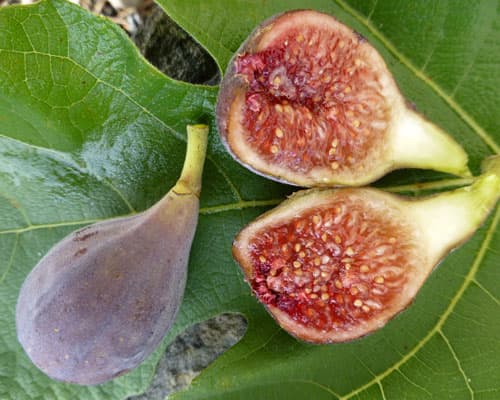Tigertooth Jujube Tree
100% Shipped in Pot, Just like buying in person.
The Tigertooth Jujube Tree is a unique and flavorful addition to any garden. With its juicy and sweet fruits, this tree is a must-have for fruit enthusiasts. Order online now and enjoy the convenience of having this tree delivered directly to your doorstep.
Out of Stock
This product is currently not in stock. Please add it to your wishlist to be notified when it’s available.
Recommended with Tigertooth Jujube Tree
- Product Description
- Planting & Care
- Shipping Info
Tigertooth Jujube: Unleash the Exotic Flavor
About the Fruit
Indulge in the unique sweetness of the Tigertooth Jujube, known for its distinctive elongated fruit that resembles a date when mature. Each bite of this crisp, apple-like delicacy is packed with a refreshing sweetness and a hint of sappiness, perfect for snacking, baking, or creating delectable dried treats. The Tigertooth Jujube is a rare gem that is sure to delight your palate and become a conversation starter at your next gathering.
What to Know About the Tree
The Tigertooth Jujube tree stands as a testament to both beauty and resilience. Adaptable and drought-resistant, this deciduous tree will impress with its elegant stature, reaching up to 15-20 feet in height. Its branches boast small, glossy leaves that transition to a stunning golden hue in the fall, while the summer months bring petite, fragrant flowers that are a joy to behold. This hardy tree’s ability to thrive in a variety of soil types makes it an exceptional choice for gardeners at any experience level.
Harvest Season
Autumn heralds the arrival of the Tigertooth Jujube’s harvest season, a time when the tree is adorned with its distinctive, elongated fruits. The ripening process is a visual spectacle, as the jujubes transition from a bright green to a deep, mahogany brown, signaling their readiness to be plucked and savored. This bountiful period is eagerly anticipated by fruit lovers eager to enjoy the tree’s crisp, sweet harvest.
Enhancing Your Fruitscape™
The Tigertooth Jujube tree is not only a bearer of exotic fruits but also an elegant addition to your fruitscape™, offering both visual appeal and practical benefits. Imagine its stately presence in your garden, providing dappled shade and a cascading array of golden leaves in fall. Integrate this tree into your fruitscape™ for a touch of the exotic, and enjoy the dual rewards of a stunning landscape and a delectable harvest. With Just Fruits and Exotics, you will receive a tree shipped 100% in pot, carefully packaged to ensure its arrival in pristine condition, ready to enliven your garden and your taste buds. Trust our family-owned and operated nursery to provide you with a quality Tigertooth Jujube tree that’s sure to be the crown jewel of your fruitscape™.
| Cold Hardy | (10°)-(5°) |
|---|---|
| Container Plant | No |
| Grafted | Yes |
| Growing Zone | 6A, 6B, 7A, 7B, 8A, 8B, 9A, 9B, 10A, 10B |
| Mature Height | 20-25 FT |
| Mature Width | 10-15 FT |
| Pollinator | Self Fertile |
| Spacing | 10-15 FT |
| Sunlight | Part to Full |
Recommended Fertilizers
Starter Fertilizer: Kickstart with Espoma Organic Bio-tone® Starter Plus. This potent blend boosts root mass and aids in mitigating transplant shock, ensuring your plants thrive in their new home.
Maintenance Fertilizer: For continued growth and fruit production, we recommend Espoma Organic Tree-tone Fertilizer. Designed specifically for fruit trees, this balanced formula nourishes your plants, promoting vibrant growth and bountiful harvests.
Fruitscaping™ with Jujube Trees
Experience the fun and fascination of Fruitscaping™ with our Jujube Trees. These charming, easy-care trees are a delightful addition to any gardening endeavor, known for their resilience, longevity, and delicious, sweet fruit reminiscent of apples.
Jujube Trees, or “Chinese Dates”, are a fantastic choice for the adventurous home gardener. Their robust growth habit, drought tolerance, and adaptability to various soil types make them a perfect fit for a range of climates and landscapes. Moreover, their resistance to pests and diseases means less time fussing over your tree and more time enjoying the fruits of your labor.
The Jujube Tree’s rewards extend beyond its effortless care. The small, apple-like fruits have a sweet, crisp texture when fresh, and they mature into a soft, date-like consistency when dried. Whether eaten fresh, dried, or used in baking and confectionery, jujubes offer a unique, versatile flavor to savor and share.
In the garden, Jujube Trees shine with their architectural beauty. Their gnarled, zigzagging branches create an eye-catching pattern, while the shiny, bright green leaves bring a lush vibrancy. Come fall, the leaves turn a stunning yellow, providing a dramatic seasonal display.
Maintaining your Jujube Tree is straightforward – a sunny location, well-draining soil, and occasional watering in dry conditions are the basic requirements. A yearly application of a balanced fertilizer can also enhance the tree’s health and productivity.
Venture into the engaging world of Fruitscaping™ with Jujube Trees. From the rewarding process of nurturing and care to the sweet taste of your homegrown jujubes, these trees bring joy, beauty, and a touch of the exotic to your backyard.
Growing Guides
You can find many planting & care guides on our growing guides page.
Jujube Recipe
Candied Dried Jujube
- Lightly prick the skin of 2 cups of ripe Jujube.
- Fill a mason jar with fruit and top with honey.
- Seal and place to marinate in the refrigerator for one week.
- Take out and place on a cookie sheet. Place in a low heat oven (about 200 degrees) and dehydrate until thoroughly dried.
- Roll in confectioners sugar, and eat them like crazy!
Shipping Restrictions
Unfortunately, We Cannot Process Orders to California, Hawaii, Alaska, or Internationally: Please note that due to specific agricultural regulations, we’re unable to ship any plants to the states of California, Hawaii, and Alaska, or outside the United States. Additionally, citrus trees can only be shipped within the state of Florida.
Shipping Information
Before Your Plants Arrive: You can find many guides on unpacking, planting, & care, on our growing guides page.
The Journey From Our Nursery to Your Door: We NEVER ship our plants bare root. Your plant will travel in the very container in which it was nurtured. We thoroughly prune and water them before packing, and make sure they’re well wrapped to retain moisture during transit. It’s as though you’ve personally collected them from our nursery!
Choose Your Ship Date: We understand you’ll want to be available when your plant arrives. Our checkout process features a handy calendar that allows you to choose the Monday on which you want your plant to ship. Depending on your location, you’ll likely receive your plant by Wednesday, Thursday, or Friday of that week. Once shipped, UPS will generate a tracking number and send it to the email you provided. You can then follow your plant’s journey and ensure someone is available to unpack it on arrival day.
Click Here To View Our Shipping Page For More Information & Packing/Unpacking Plants Videos
Growing Calendar
- Planting
- Pruning
- Harvest



